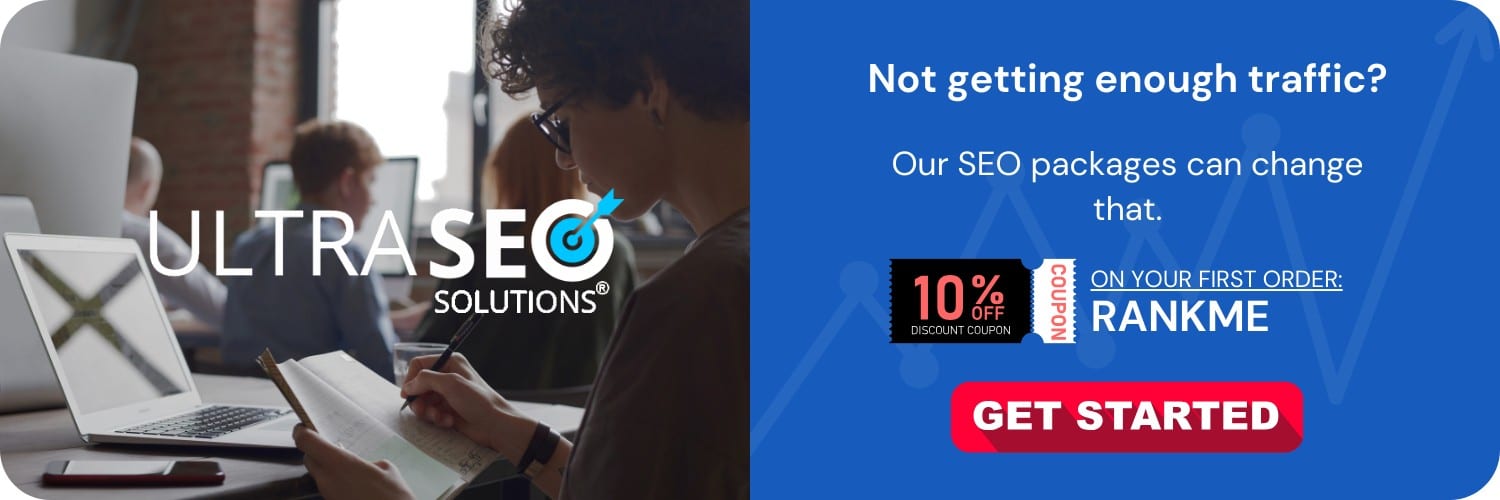
Creating SEO-friendly content for B2B websites hinges on a deep understanding of your industry, clear identification of your target audience, meticulous keyword research, and the creation of comprehensive, authoritative, and valuable content that addresses the specific needs and pain points of other businesses. By tailoring your content strategy to speak directly to these businesses, using a tone that resonates with professionals, and optimizing each piece of content with SEO best practices, you can increase visibility and engagement on your B2B website.
Understanding Your B2B Audience
Before you can craft SEO-friendly content, you need to have a clear understanding of who you’re writing for. Your audience in the B2B sector likely consists of professionals seeking solutions that can streamline operations, increase profitability, and mitigate challenges. Dive into client personas and consider the following:
- Decision-Maker Profiles: Identify the roles of the individuals who will be reading your content. Are they C-level executives, IT managers, or procurement officers?
- Sector-Specific Needs: What are the common challenges and goals within your target industry?
- Jargon and Tone: Learn the industry vernacular to communicate effectively without coming across as patronizing.
- Content Preferences: Analyze whether your audience prefers long-form articles, videos, infographics, or case studies.
Keyword Research Tailored for B2B
Choosing the right keywords is critical in SEO, and in the B2B world, this often means focusing on long-tail keywords that reflect specific queries made by professionals.
Selecting Long-Tail Keywords
A B2B keyword strategy typically differs from B2C in that it targets more niche, industry-specific terms. These keywords often have less search volume but are associated with a higher intent to engage or convert.
Tools and Techniques
Use SEO tools like Ahrefs, SEMrush, or Google’s Keyword Planner for your research. Look for keywords that have a reasonable amount of search traffic but aren’t so competitive that ranking for them is unrealistic.
Understanding Search Intent
Tailor your keyword strategy around the searcher’s intent. In B2B, this could mean focusing on keywords that signify a readiness to purchase or a desire for detailed, technical information.
Crafting Comprehensive Content
Your B2B content should be in-depth, informative, and reflect thought leadership. This level of quality demonstrates authority and expertise to both your audience and search engines.
Addressing the B2B Buyer’s Journey
The buyer’s journey in B2B is often more complex than in B2C. Your content should cater to each stage of this journey:
- Awareness: Create informative blog posts and articles that address common problems and introduce solutions.
- Consideration: Offer comparison guides, whitepapers, and webinars.
- Decision: Develop case studies, product brochures, and detailed service pages that convince readers to choose your business.
Providing Answers and Resources
SEO-friendly B2B content often answers specific questions. Incorporate FAQs, and how-to guides, into your content to capture this search traffic.
Linking Internally and Externally
Effective content links to relevant pages within your website and to authoritative external sources. This not only aids in SEO but also provides users with additional, valuable information.
On-Page SEO for B2B Content
On-page SEO involves optimizing individual elements on your website to help search engines understand and rank your content.
Title Tags and Meta Descriptions
Craft compelling and concise title tags and meta descriptions using main keywords; these show up in search results and can influence click-through rates.
Heading Structure
Organize your content with clear headings (H2, H3 tags, etc.) to make it easily digestible for readers and search engines.
Optimizing Images and Videos
Ensure that multimedia elements have descriptive file names and alt tags that reflect your keyword strategy. This aids in image search visibility.
Technical SEO Foundations
Technical SEO is just as crucial for B2B as it is for any other type of website. This includes having a fast-loading site, a mobile-friendly design, and a logical site structure that search engines can crawl efficiently.
Mobile Optimization
With more professionals using mobile devices for research and decision-making, ensure your content is responsive and offers a seamless experience across all devices.
Sitemap and Navigation
Maintain a clear hierarchy and navigation to ensure search engines can index your content. A well-structured sitemap also aids users in finding the information they need quickly.
Content Promotion and Link Building
Creating great content is just the first step; promoting it helps in gaining visibility.
Social Media and Forums
LinkedIn is particularly powerful for B2B connections. Share your content on industry-specific forums as well for added exposure and potential backlinks.
Outreach and Partnerships
Collaborate with industry influencers, and conduct outreach for guest blogging opportunities. This can increase your content’s reach and earn valuable backlinks.
Email Marketing
Leverage your email list by sharing new content with your subscribers. This can drive direct traffic and encourage further sharing.
Monitoring Performance and Iterating
SEO isn’t a one-and-done deal. Use tools like Google Analytics to track the performance of your content.
Analyze User Behavior
Assess how users interact with your content. Look at metrics like time on page, bounce rate, and conversion rates.
Revise and Update Content
SEO is ever-evolving, and so should your content. Regularly update and improve your content to keep it relevant and authoritative.
Finishing Thoughts
SEO-friendly content creation for B2B websites requires a specialized approach that respects the unique characteristics of the audience and the nature of professional services. Consistency, patience, and ongoing optimization efforts are key to building a strong SEO presence that will help your B2B website attract the right kind of traffic, generate leads, and contribute to business growth. Remember, B2B content isn’t just about ranking in search engines, but about building meaningful connections with other businesses through valuable, targeted content.
Frequently Asked Questions
What is SEO-friendly content?
SEO-friendly content is content that is designed to rank well in search engine results pages (SERPs). It is not only informative and relevant to the reader but also optimized for search engines. This includes using keywords appropriately, creating quality backlinks, and ensuring the content is easily readable by search engine algorithms.
Why is SEO-friendly content important for B2B websites?
SEO-friendly content is crucial for B2B websites as it helps them gain visibility among their target audience, who are often other businesses looking for products or services online. By ranking higher in SERPs, a B2B website can attract more qualified traffic, generate leads, and ultimately increase sales conversions.
How can I identify the right keywords for my B2B content?
Identifying the right keywords involves understanding your target audience and what terms they use to search for the products or services you are offering. Keyword research tools like Google Keyword Planner, SEMrush, or Ahrefs can help you discover relevant keywords. Look for keywords with a balance of high search volume and low competition that are specific to your industry and offerings.
What are some best practices for incorporating keywords into B2B content?
Best practices for incorporating keywords into B2B content include:
- Placing keywords in title tags, headings, meta descriptions, and the first 100 words of your content.
- Using keywords naturally and contextually within the text, without overstuffing.
- Including long-tail keywords that are more specific and less competitive.
- Using related keywords and synonyms to avoid repetition and improve content relevance.
How often should I publish new content on my B2B website?
There is no set frequency for publishing new content that applies to all B2B websites, as it can vary based on your industry, competition, and resources. However, a consistent and strategic content schedule is beneficial. Many businesses find that posting weekly or biweekly can strike a good balance between keeping their website fresh and not stretching their resources too thin.
What role do backlinks play in creating SEO-friendly content?
Backlinks are links from other websites to your content. They are important for SEO because they act as a vote of confidence in the eyes of search engines. Quality backlinks from reputable and relevant websites can significantly improve your content’s authority and ranking. Focus on creating high-quality content that is shareable and valuable to your target audience to naturally earn backlinks.
How can I make my B2B content more engaging for the reader?
To make B2B content more engaging for the reader:
- Use a conversational tone to make complex topics more approachable.
- Break up text with headings, bullet points, and numbered lists to improve readability.
- Incorporate multimedia elements like images, videos, infographics to keep the reader’s attention.
- Provide real-world examples or case studies to demonstrate the practical applications of your content.
- End with a clear call-to-action (CTA) to guide readers to the next step.
Are there any technical aspects of SEO I need to consider when creating content?
Yes, several technical aspects of SEO should be taken into account, such as:
- Ensuring your website has a clean, user-friendly structure that is easy for search engines to crawl.
- Optimizing loading speeds, as slow pages can negatively impact rankings and user experience.
- Creating a responsive design that works on all devices, particularly mobiles, as search engines favor mobile-friendly sites.
- Implementing schema markup to help search engines understand the context of your content better.
Can I repurpose existing content to improve its SEO?
Yes, repurposing existing content is an excellent way to improve its SEO value. This can involve updating statistics, incorporating current industry trends, enriching the text with new insights, and optimizing for new relevant keywords. Remember also to update the publication date to reflect the content’s freshness to both readers and search engines.
What metrics should I track to measure the success of my SEO-friendly B2B content?
To measure the success of your SEO-friendly B2B content, consider tracking metrics such as:
- Organic traffic to your website and specific pages.
- Search engine rankings for your targeted keywords.
- The number and quality of backlinks to your content.
- Engagement metrics like time spent on page, bounce rate, and social shares.
- Conversion rates, including form submissions, sign-ups, and direct sales linked to the content.






